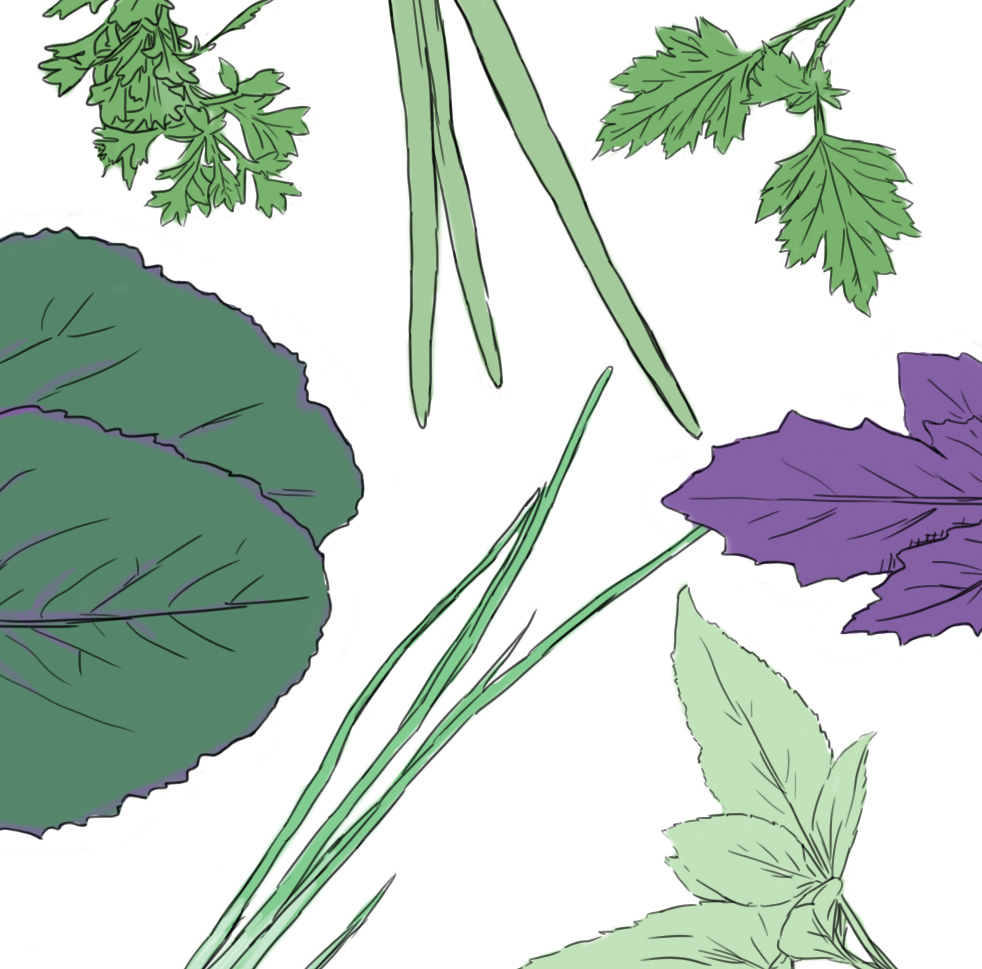
The sky was a clear bright blue, and the temperature was just warm enough for shorts and a t-shirt. A period of heavy rain a week before brought more temperate weather to Japan, so even in the sun it felt nice to be outside.
My grandmother and I decided to go on an afternoon walk around the neighborhood, because there aren’t many days like this in the summer. The streets were quiet as the midday slumber settled in, and the last stragglers in restaurants were beginning to head back to their offices.
I was examining a fruit cart’s daily special when my grandmother suddenly stopped in the middle of the sidewalk to bend down and pick something up.
“Look here Kaki-chan, there’s so much dokudami growing here!”
Called chameleon plant in English, it’s pretty unassuming. A small plant with wide heart-shaped leaves and tiny white flowers, most people wouldn’t really stop to look at it on the sidewalk, much less stop to pick it up. I nodded along as if I understood her excitement, but was really just confused.
My grandma continued, “You can make this into a great tea if you want. It’s full of antioxidants and polyphenols so it’ll keep your skin looking young.” She picked a bunch and put it into a little bag, content with the little find. “This is so perfect! I used to have a few in my backyard, but my housekeeper picked them all out. I was so disappointed, but I can replant them now.”
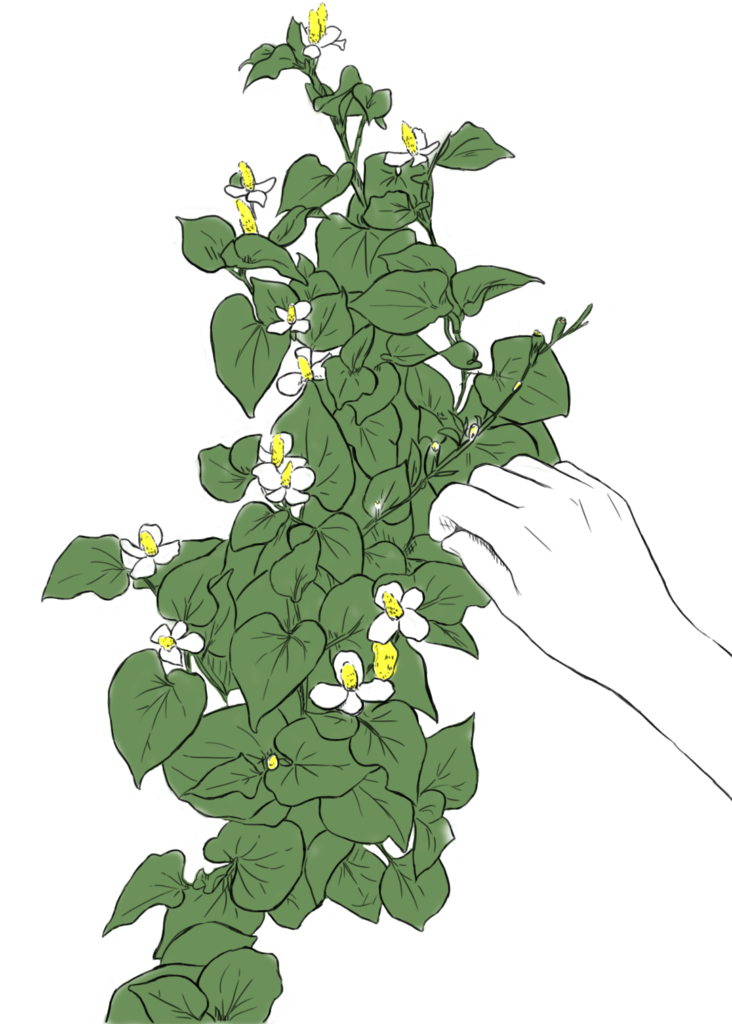
Turns out if you Google “chameleon plant” you’ll also get a few hits that explain how to exterminate them. A durable plant, it proves troublesome for farmers and homeowners who find it invading their yards. Most people would describe it as a cumbersome weed. Poor housekeeper, she thought she was doing someone an extra favor.
“I didn’t know you could eat weeds,” I commented.
My grandmother laughed, “Weeds? I guess they are! But why wouldn’t you be able to eat them? Just because it can grow on the sidewalk doesn’t mean it’s toxic. Not just tea, you can also put it into some fresh spring rolls, mince and add it into hamburger patties, or put it into clear soups. It has a more interesting tang than cilantro, some people say a bit fish-like, but that’s why it goes incredibly well with Thai flavors.”

When we returned home, my grandmother pulled out a book detailing the kinds of edible plants commonly found in Japan, with descriptions of taste, texture, and preparation methods. Gifted to her by a friend a while ago, it was her first introduction to the world of foraging and traditional Chinese herbal medicine:
Common Purslane
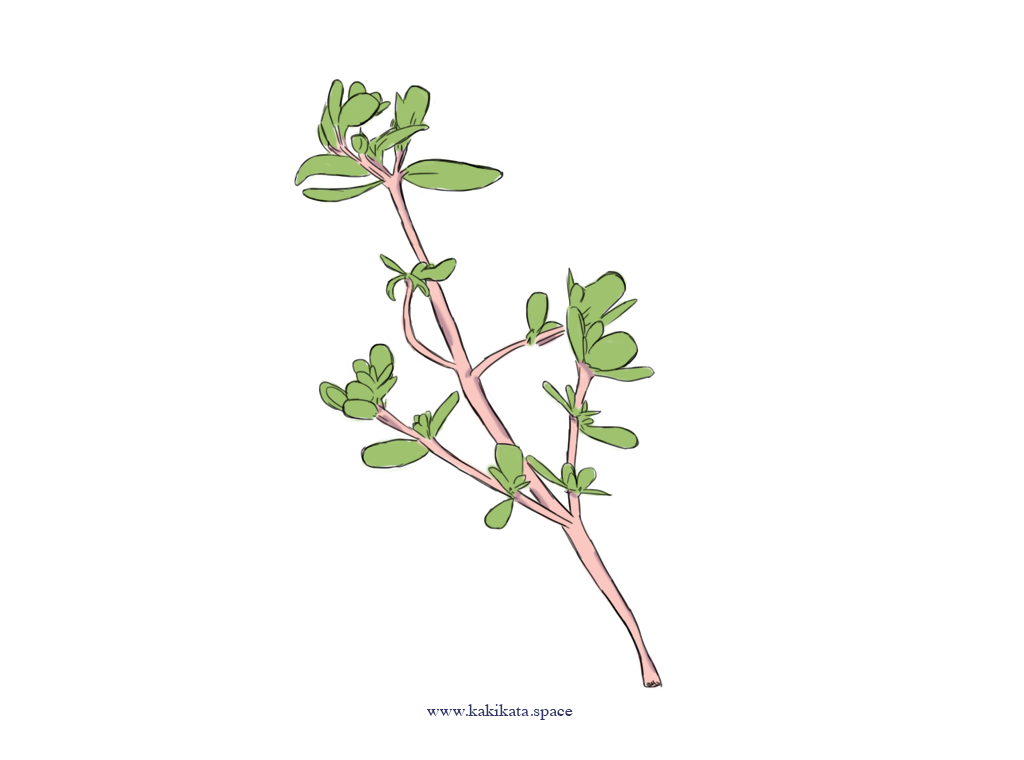
Cooking
- The young leaves and stems can be chopped, boiled, and made into ohitashi, or it can be seasoned as Korean namul. It also goes well when minced and mixed with natto and okra, seasoned with dashi soy sauce.
Traditional Medicinal Use
- It is rich in vitamin A, an antioxidant, and may help mitigate allergic and eczema reactions. Also one of the richest sources of omega-3 fatty acids when it comes to green plants, so can be a good alternative to fish for vegans. (Source: Uddin & et al., 2014)
Dandelion
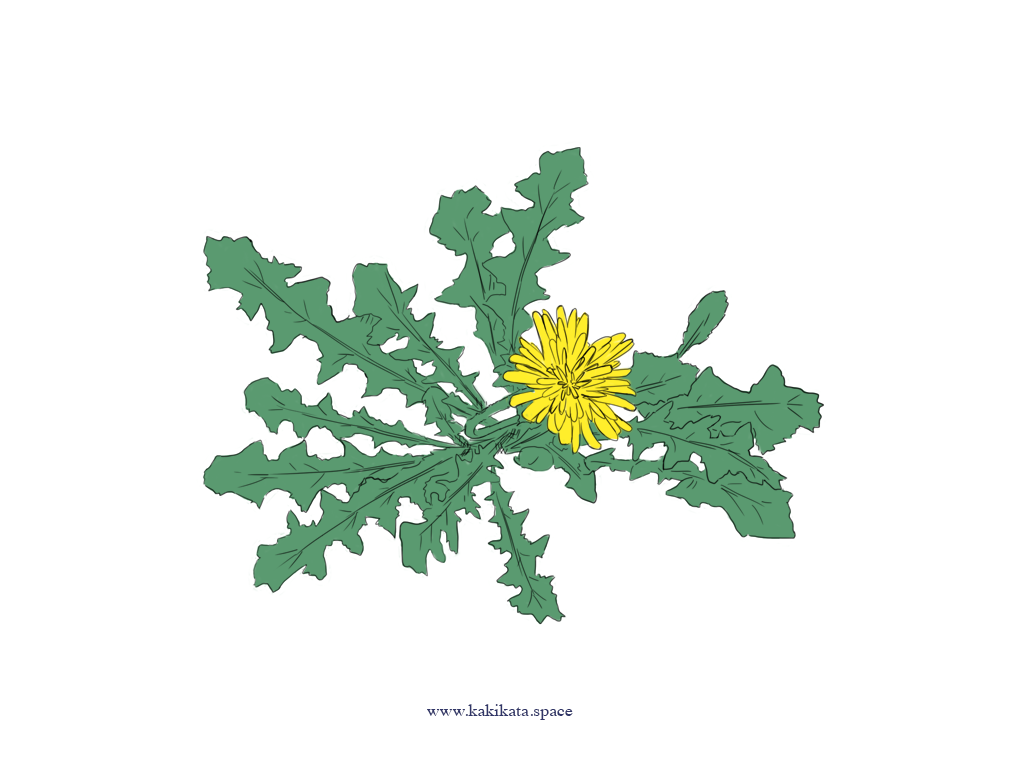
Cooking
- The young leaves, flowers, and roots can be made into tempura. It can also be boiled and then made into pickles, or a warm salad with sesame dressing. Also goes well as a kinpira salad, which is seasoned with soy sauce, sugar, mirin, sake, dashi, and sesame oil. If you boil it, make sure to skim the alkaline vegetable substance from the water to remove bitterness. You may also mince it and make it into a hot tea.
Traditional Medicinal Use
- Dandelion may be good for individuals with weak stomachs or poor digestion. Has properties which slow absorption of carbohydrates and may be beneficial for individuals struggling with blood sugar. (Source: González-Castejó, Visioli, & Rodriguez-Casado 2012)
Wormwood
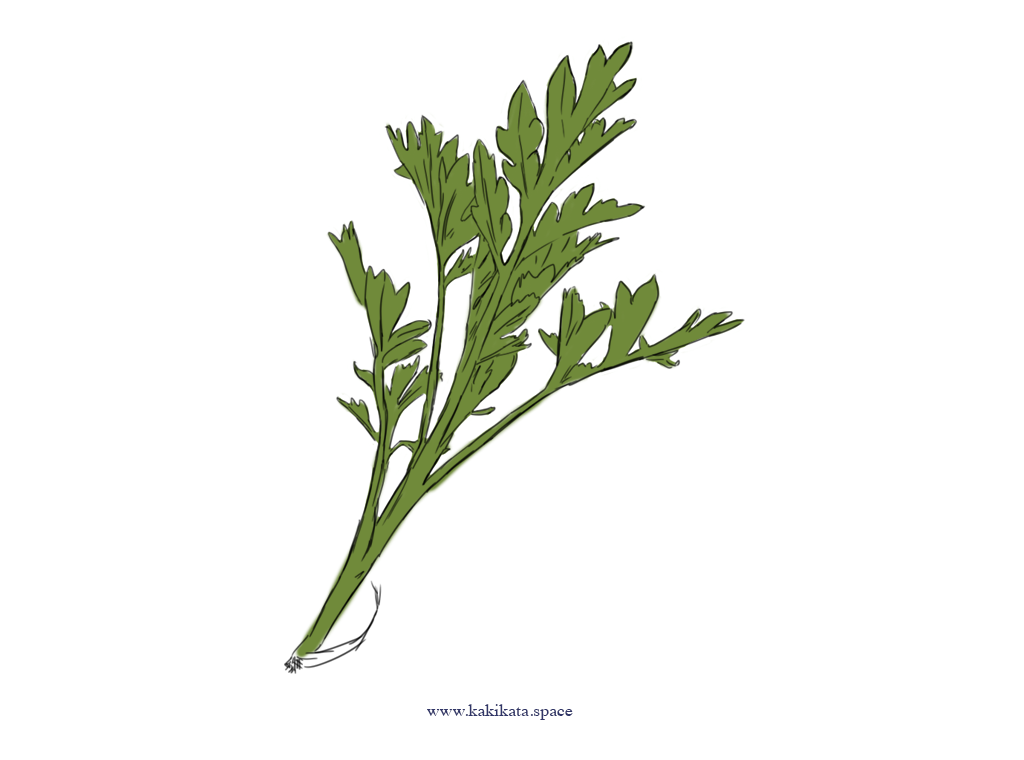
Cooking
- The leaves and young buds are often served as tempura. You may also boil and make it into an ohitashi, or grate it and use it to flavor mochi desserts. Makes into a great tea– let it dry in the sun for a day, and then boil. Commonly used in baths as well, as it can be beneficial for the skin.
Traditional Medicinal Use
- Historically used to improve digestive function and stomach pain. (Source: Koch 2009)
Shepherd’s Purse
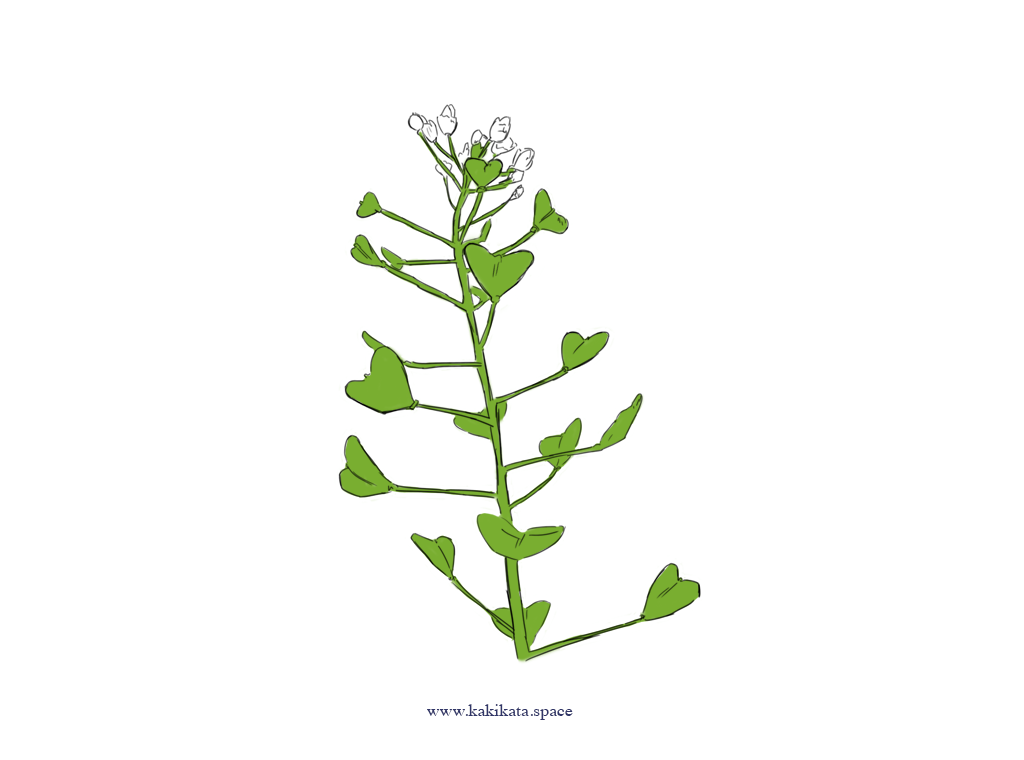
Cooking
- Young leaves can be made into ohitashi, or boiled and made into a warm salad with sesame dressing. May also be pickled.
Traditional Medicinal Use
- Can be good for easing inflammatory symptoms for those with poor digestion. (Source: Peng & et al. 2019)
Disclaimer: This is not meant to be medical information, but to be informative for those interested in the practice of herbology and Chinese medicine.
The Modern-Day Plant Forager
It turns out there is a whole online universe of modern-day plant foragers and Chinese medicine hobbyists. Old and young, male and female, I found that there is actually no clear demographic for this group of people. Even their reasons for engaging in herbology spanned the spectrum– from environmental concerns, to personal health, to money saving, to just a plain curiosity about what could and couldn’t be done about those pesky little plants that grow in our neighborhoods.

I asked my grandmother why she engaged in foraging grasses, and what herbology meant to her. Were the supermarket vegetables or supplemental extracts not enough to satisfy her health and cooking needs? Why pick these plants?
She paused, but then gave a little smirk.
“I guess where most might see a growing nuisance, these clusters of plants look like opportunities for repurpose. Because who’s to say that a bag of processed potato chips is more “food” to us than dokudami which could be used in tea?”

If you found this article interesting, informative, or entertaining please let me know by emailing at kokumura@kakikata.space! Although I am no herbalist, I find the field fascinating and am always looking to discuss it with hobbyists and experts alike. Anyways, I would just love to hear from you!
Warm wishes, Kaki
SOURCES: Koch J. Assessment Report on Artemisia absinthium L., Herba. London, UK: European Medicines Agency; 2009. Retrieved from: https://www.ema.europa.eu/en/documents/herbal-report/final-assessment-report-artemisia-absinthium-l-herba-revision-1_en.pdf Marta González-Castejón, Francesco Visioli, Arantxa Rodriguez-Casado, Diverse biological activities of dandelion, Nutrition Reviews, Volume 70, Issue 9, 1 September 2012, Pages 534–547, https://doi.org/10.1111/j.1753-4887.2012.00509.x Peng, J., Hu, T., Li, J., Du, J., Zhu, K., Cheng, B., & Li, K. (2019). Shepherd's Purse Polyphenols Exert Its Anti-Inflammatory and Antioxidative Effects Associated with Suppressing MAPK and NF-κB Pathways and Heme Oxygenase-1 Activation. Oxidative medicine and cellular longevity, 2019, 7202695. doi:10.1155/2019/7202695 Uddin, M. K., Juraimi, A. S., Hossain, M. S., Nahar, M. A., Ali, M. E., & Rahman, M. M. (2014). Purslane weed (Portulaca oleracea): a prospective plant source of nutrition, omega-3 fatty acid, and antioxidant attributes. TheScientificWorldJournal, 2014, 951019. doi:10.1155/2014/951019